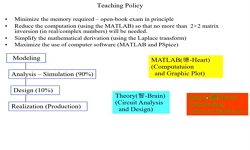The functionalist view of language has arisen from analysis of the effect of repetition on the storage and processing of language at a variety of levels of linguistic structure. Applied to metaphor, the approach places metaphorical conventionalization...
http://chineseinput.net/에서 pinyin(병음)방식으로 중국어를 변환할 수 있습니다.
변환된 중국어를 복사하여 사용하시면 됩니다.
- 中文 을 입력하시려면 zhongwen을 입력하시고 space를누르시면됩니다.
- 北京 을 입력하시려면 beijing을 입력하시고 space를 누르시면 됩니다.


The Role of Linguistic Frequency Effects in Shaping Metaphorical Systems = The Role of Linguistic Frequency Effects in Shaping Metaphorical Systems
한글로보기https://www.riss.kr/link?id=A100425709
-
저자
( Daniel R. Sanford ) (The University of New Mexico)

- 발행기관
- 학술지명
- 권호사항
-
발행연도
2015
-
작성언어
Korean
- 주제어
-
등재정보
SCOPUS,KCI등재,ESCI
-
자료형태
학술저널
-
수록면
41-59(19쪽)
- DOI식별코드
- 제공처
-
0
상세조회 -
0
다운로드
부가정보
다국어 초록 (Multilingual Abstract)
The functionalist view of language has arisen from analysis of the effect of repetition on the storage and processing of language at a variety of levels of linguistic structure. Applied to metaphor, the approach places metaphorical conventionalization at the center of our understanding of metaphor, explaining several important aspects of metaphorical systems (their internal systematicity, the gradedness of metaphor, the idiosyncracy of conventionalized metaphorical utterances, and others) as arising from the cumulative effect, over time, of frequency effects at the level of both conceptual mappings and utterances. Ray Gibbs has argued that such a view of metaphor ignores the essential contribution to our understanding of metaphorical systems that comes from semantic factors, and above all else the nature of metaphor as following from embodied cognition. In this article, I respond to several of Gibbs’ major objections to Emergent Metaphor Theory. In responding to these concerns, I take the position that embodiment and other cognitive factors must indeed be included in a full accounting of metaphor. I argue that a frequency-based account of metaphor is fully compatible with semantic factors, and moreover that the aspects of metaphor which follow from frequency effects are essential, defining attributes of metaphorical systems. The functionalist view of language has arisen from analysis of the effect of repetition on the storage and processing of language at a variety of levels of linguistic structure. Applied to metaphor, the approach places metaphorical conventionalization at the center of our understanding of metaphor, explaining several important aspects of metaphorical systems (their internal systematicity, the gradedness of metaphor, the idiosyncracy of conventionalized metaphorical utterances, and others) as arising from the cumulative effect, over time, of frequency effects at the level of both conceptual mappings and utterances. Ray Gibbs has argued that such a view of metaphor ignores the essential contribution to our understanding of metaphorical systems that comes from semantic factors, and above all else the nature of metaphor as following from embodied cognition. In this article, I respond to several of Gibbs’ major objections to Emergent Metaphor Theory. In responding to these concerns, I take the position that embodiment and other cognitive factors must indeed be included in a full accounting of metaphor. I argue that a frequency-based account of metaphor is fully compatible with semantic factors, and moreover that the aspects of metaphor which follow from frequency effects are essential, defining attributes of metaphorical systems.
동일학술지(권/호) 다른 논문
-
Brain Mapping of Lexico-Semantic Functions in Bilinguals
- 서울대학교 인지과학연구소
- ( Angela Grant )
- 2015
- SCOPUS,KCI등재,ESCI
-
Autism Spectrum Disorders and Psychopathy: Clinical and Criminal Justice Considerations
- 서울대학교 인지과학연구소
- ( Zoltan Boka )
- 2015
- SCOPUS,KCI등재,ESCI
-
The Entropic Brain: Effortful Speech Reflected in Organisation of the Network Graph
- 서울대학교 인지과학연구소
- ( Jeong Sug Kyong )
- 2015
- SCOPUS,KCI등재,ESCI
-
The entropic brain: effortful speech reflcted in organisation of the network graph
- 서울대학교 인지과학연구소
- 경정숙
- 2015
- SCOPUS,KCI등재,ESCI




 KCI
KCI KISS
KISS






